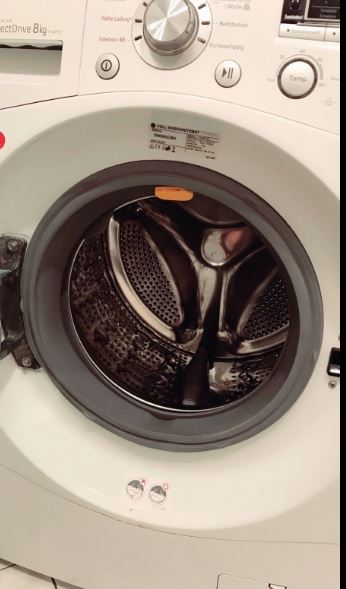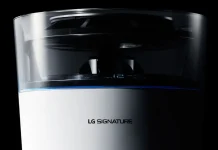Since the early 2000s, many buyers began to complain about the manufacturing quality of washing machines. Appliances that had once been considered a benchmark of reliability were no longer meeting the same standards: after just a few years of use, they already required repairs. Why did this happen?
The Formation of the Washing Machine Market (1930–1950s)
The development of the industry was shaped by many factors. At the beginning of the 20th century, only 20–40% of households owned a washing machine. During World War II, production came to a halt as factories were repurposed to meet military needs.
When manufacturing resumed in the 1950s, companies re-entered a free market and faced fierce competition. To win customers, they focused on quality. At that time, purchasing a washing machine was a major investment for a family, so reliability and brand reputation were essential. People often asked friends and neighbors about their experiences, and word of mouth became a decisive factor in choosing a machine.
The market was open, demand was enormous, and quality was the key advantage for any manufacturer.
The Washing Machine Market (1950–1990)
In the postwar years, most washing machines were of the activator type, with one tank for washing and a second for spinning. It was only in the mid-1950s that the first fully automatic washing machines appeared. By the early 1960s, manufacturers began phasing out activator models and shifting their focus entirely to automatic machines.
This marked the beginning of a massive replacement cycle: households eagerly traded in their old machines for modern ones that were easier to use and required far less human effort. Once again, manufacturers competed primarily on quality, offering consumers increasingly reliable appliances equipped with new technologies.
By the late 1980s, however, the market was saturated. Most households had already upgraded, and nearly all outdated machines had been replaced. Manufacturers suddenly faced a new challenge: how to continue selling their products in a fully equipped market.
Consumer Demand for Washing Machines (1990–2010)
The early 1990s brought major geopolitical and economic changes. The collapse of the USSR opened up a vast region that had long been closed to foreign goods and had also influenced markets in Eastern Europe. At the same time, China and other Asian countries began to open their economies, while in the Americas — including Central and Latin America — financial conditions improved.
Together, these shifts created enormous new markets. Between 1990 and 2010, global demand grew by around 100 million washing machines.
For manufacturers, this was a powerful stimulus: fresh markets, huge sales potential, and a renewed need to win customer loyalty. Once again, quality became the main selling point. With revenues surging, companies invested heavily in improving their products, introducing better technologies, and refining designs. At the same time, parts were engineered for easy repair, ensuring that large-scale production could be supported by accessible maintenance.
Washing Machines from 2010 to the Present: Trends and Shifts in Sales Strategies
By 2010, the washing machine market had reached saturation. Demand dropped sharply, and many companies could not withstand the downturn — they were either forced out of the market or acquired by larger competitors.
The situation was paradoxical: households already had washing machines, demand was minimal, and production became increasingly unprofitable. Earlier, appliances manufactured in the late 20th and early 21st centuries had been designed for repair — it was far cheaper to fix a machine than to buy a new one.
But for companies to survive, they needed new revenue streams. It was no longer enough to profit from selling the appliance itself; spare parts and after-sales service became an additional source of income. Yet this created a challenge: how could a company profit from spare parts if the machines themselves were too reliable, often lasting 10–20 years without serious repair?
Why Washing Machines Are No Longer Built to Last
In the 21st century, manufacturers deliberately reduced the service life of washing machines. While in the 1990s the declared lifespan was 10–15 years, by 2010 it had shrunk to just 5–7 years. Production costs were cut, and individual components were designed with a limited life expectancy.
For example, drums were made non-collapsible: the bearings were sealed inside the tank during casting, which meant that if they failed, one had to replace the entire tank rather than a single bearing. The number of small, replaceable parts was minimized. As a result, repairing a washing machine often cost 30%–70% of the price of a new one.
The key requirement for manufacturers became simple: the machine had to last through the warranty period without breaking down. After that, repairs would be so costly or inconvenient that consumers would find it easier to discard the old machine and purchase a new one.
The Problem for Premium Brands
This shift particularly damaged the reputation of premium brands. A customer who spent $1,500–$2,000 on a washing machine expected at least 10–15 years of service, as was common in the 1990s–2000s. When the appliance failed after just 4–5 years and repairs proved expensive — often requiring original spare parts ordered directly from the manufacturer — buyers felt deceived.
Faced with this, many switched to cheaper alternatives. After all, if a $400 washing machine lasted 4 years, it was easier to accept replacing it than facing the same lifespan from a high-end model. In practice, most machines were repaired only once or twice before customers abandoned the brand altogether. Bad experiences quickly spread by word of mouth, damaging long-established reputations.
Short-Term Profits, Long-Term Losses
This situation is the result of short-sighted management. Executives pursuing quick wins focused on reducing durability, cutting production costs, and profiting from spare parts. In the short term, sales and revenues increased by 200–300%. But in the long run, the strategy eroded brand trust.
The problem is compounded by the fact that such managers often do not remain with one company for long. After achieving short-term results, they move on to new firms, repeating the same cycle and leaving behind reputational damage that becomes evident only 10–15 years later.
The Case of European and American Brands
Unfortunately, this approach has been adopted by many European manufacturers. Since 2015, for example, Miele has faced mounting criticism over both the declining durability of its machines and the complexity of repairs (source). Bosch and Siemens have also received increasing numbers of complaints regarding frequent breakdowns.
The problem is not that these companies produce “bad” machines — they are generally solid products — but that certain components are deliberately designed with a limited service life. For one family washing light loads of 3–4 kg, the machine might last several years longer, while in a household with heavier loads of 5–6 kg, parts wear out much faster. Thus, many customers experience breakdowns after only 3–4 years of use.
Even General Electric, once a leader with nearly 40% of the U.S. market, ultimately sold its entire home appliance division — including the rights to its brand — to the Chinese conglomerate Haier in 2016.
The Korean Exception
In contrast, Korean giants LG and Samsung have fared somewhat better. Drawing inspiration from Japanese practices, they initially emphasized high quality and reliable service. Over time, they adapted their strategy, striking a balance: their machines are generally considered dependable, while spare parts are widely available — not just to official service centers but also to third-party resellers. This accessibility has helped maintain consumer trust and protect their reputation in the global market.






